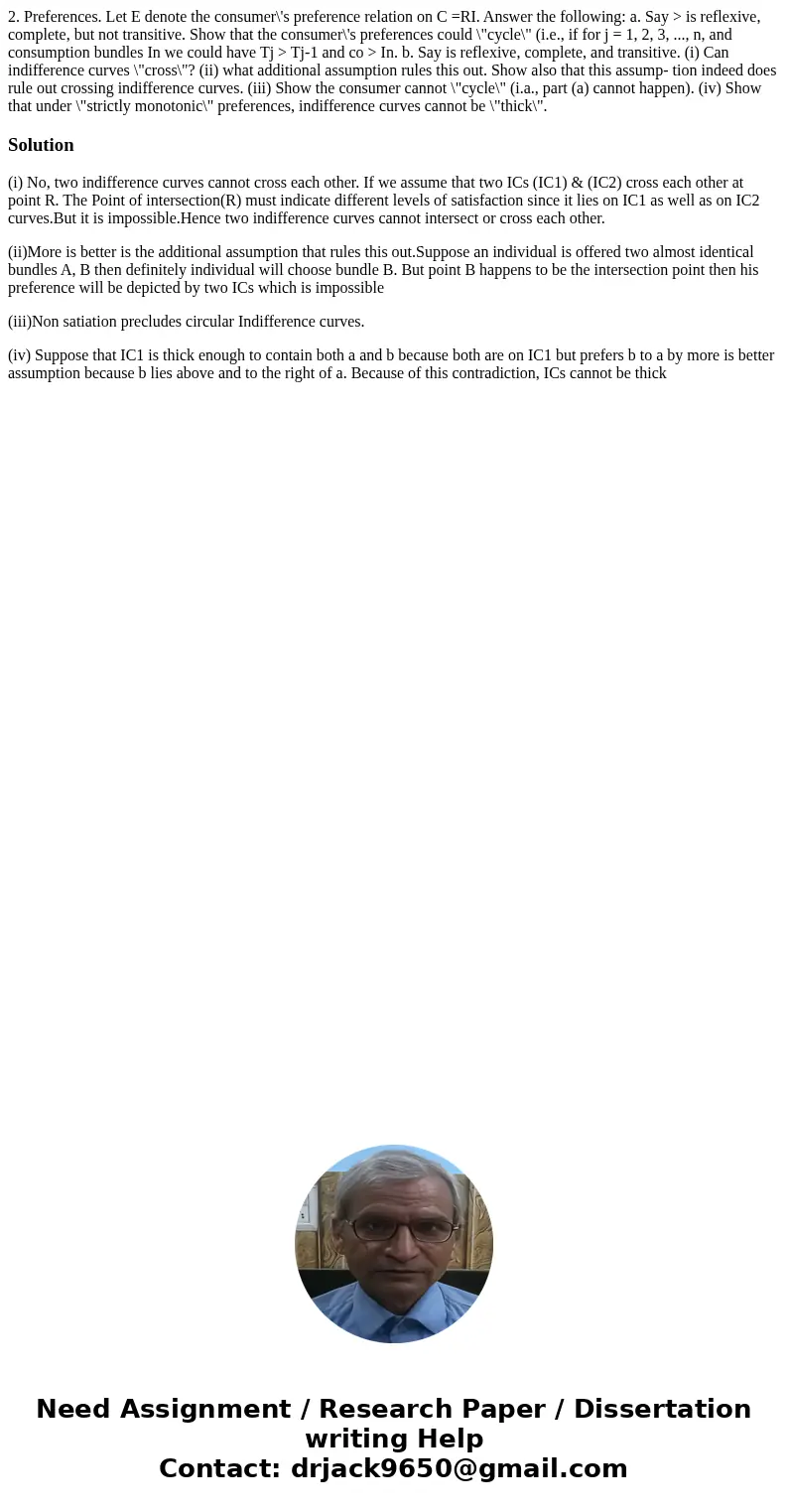2 Preferences Let E denote the consumers preference relation
Solution
(i) No, two indifference curves cannot cross each other. If we assume that two ICs (IC1) & (IC2) cross each other at point R. The Point of intersection(R) must indicate different levels of satisfaction since it lies on IC1 as well as on IC2 curves.But it is impossible.Hence two indifference curves cannot intersect or cross each other.
(ii)More is better is the additional assumption that rules this out.Suppose an individual is offered two almost identical bundles A, B then definitely individual will choose bundle B. But point B happens to be the intersection point then his preference will be depicted by two ICs which is impossible
(iii)Non satiation precludes circular Indifference curves.
(iv) Suppose that IC1 is thick enough to contain both a and b because both are on IC1 but prefers b to a by more is better assumption because b lies above and to the right of a. Because of this contradiction, ICs cannot be thick

 Homework Sourse
Homework Sourse